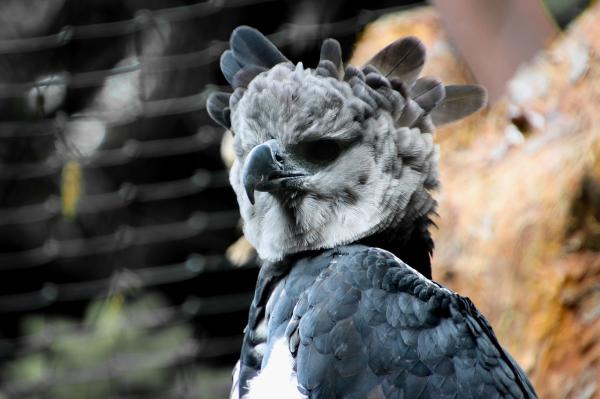
Ecuador's ecosystems are characterized by their great biodiversity, a biodiversity that is under threat. These threats have multiple causes, but human interference in natural ecosystems is one of the most significant. This includes the direct threats which come as a result of improper land development, as well as the existential threat of manmade climate change. Some animals are more at risk than others, leading to an increasing number of animals being considered endangered, vulnerable or near threatened.
At thedailyECO, we help understand the scope of this threat by looking at 17 endangered wild animals in Ecuador with photos.
Plate-billed mountain toucan (Andigena laminirostris)
Also known as the laminated hill-toucan, the plate-billed mountain toucan is a bird that measures approximately 40 cm in height and has very striking plumage. Velvety in terms of texture, this plumage has patches of gray, black and bronze, with turquoise and yellow around the eye. Their bill is long with black, red and white patches, as seen in the photo below.
Their plumage is not only colorful, but it allows them to live in the cold and humid climates of the Andes where they are most commonly found. They are wild animals of Ecuador, but can also be found in southwestern Colombia, especially in regions 2,500 and 3,000 meters of altitude. Its diet is based mainly on fruits.
This Ecuadoran wildlife species is in danger of extinction due to the destruction of the forests in which it lives. This is one of the millions of reasons why the conservation of tropical rainforests or tropical jungles is important. While its conservation status is listed as ‘Near Threatened’, its populations are in decline.
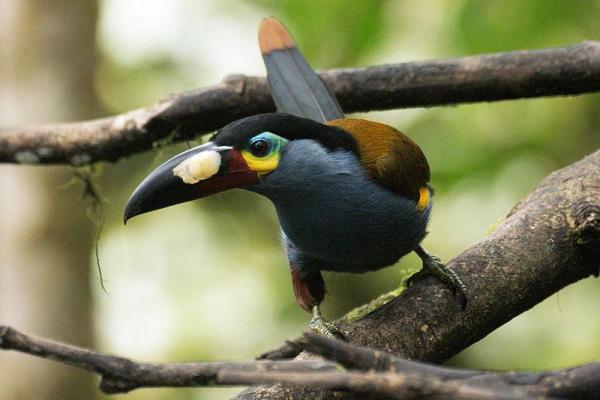
Giant armadillo (Priodontes maximus)
The giant armadillo can reach up to 59" (150 cm) in length and weigh over 72 lb (32.5 kg). The largest living species of armadillo, its coloration is brown, although it can be yellowish on its sides. Its diet is based on insects and they have various adaptations to make them efficient hunters. This includes a tongue that secretes a sticky, viscous substance and very strong claws for digging at anthills.
In addition to being a wild mammal of Ecuador, the giant armadillo lives in much of South America in humid forests. It is in danger of extinction in areas such as Ecuador due to hunting, where its bony armor is used for ornaments and its meat for food. They are also transported illegally to zoos.
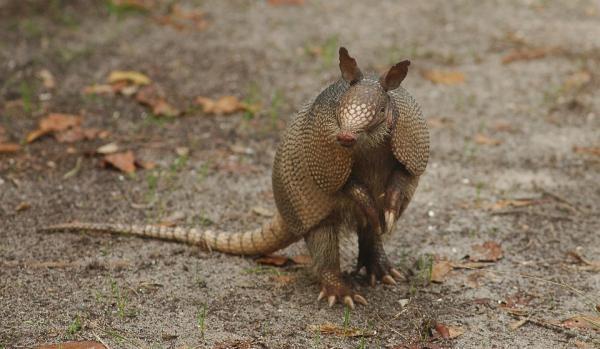
Amazon river dolphin (Inia geoffrensis)
Also known as the bufeo, boto or pink river dolphin, the Amazon river dolphin is the largest freshwater dolphin species in the world. It is characterized by its pinkish coloration, although some may be more light brown or bluish-gray in color. It can reach 8.2 ft (2.5 m) in length and weigh up to 408 lb (185 kg) in weight. However, males are generally much heavier than females, displaying a marked sexual dimorphism.
The pink dolphin has greater freedom of head movement than oceanic dolphin. While both use echolocation, the river dolphin's eyesight is practically useless in the murky water of the Amazon. Pink dolphins live in the Amazon and Orinoco rivers, where nets or pollution threaten their survival. They are the only river dolphin kept in captivity, but this is dangerous for the animal with a high mortality rate.
Our related article explains more about what is echolocation and the animals that use it.
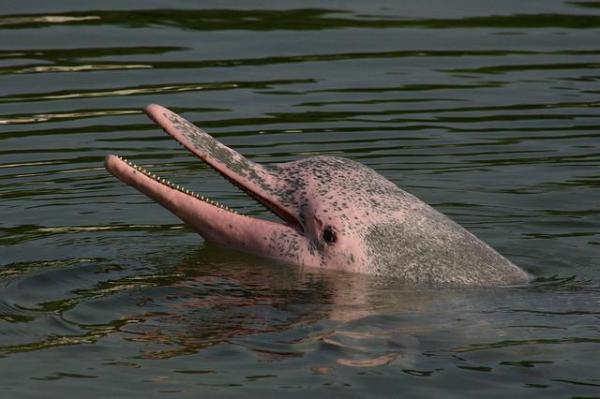
Harpy eagle (Harpia harpyja)
This diurnal raptor has plumage that is colored somewhere between black and dark grey on its wings and shoulders. The nape and head have lighter gray feathers. The harpy eagle can reach up to 6.6 ft (2 m) with outstretched wings. It lives in regions of Central and South America, including Ecuador. The felling of forests and jungles has drastically reduced its habitat. Combined with illegal hunting, these threats has led to the harpy eagle having a conservation status of ‘Vulnerable’.
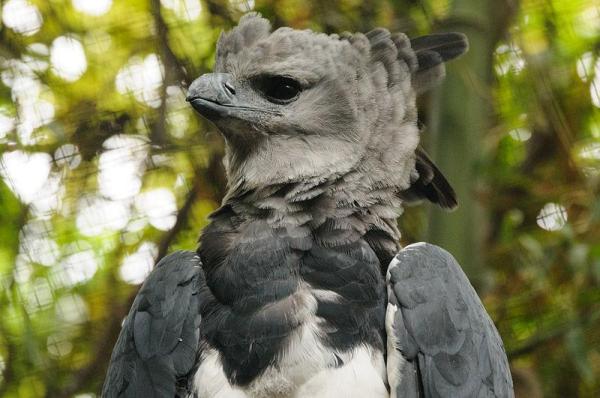
Andean condor (Vultur gryphus)
The Andean condor is one of the largest high-flying birds in the world, with a wingspan of up to 10 ft 10" (3.3 m) and weighing up to 33 lb (15 kg). They live in fairly windy areas, as they use the wind currents to sail in the air. They are common to mountainous and coastal regions of Ecuador with strong breezes. In addition to black plumage and a characteristic white collar, they have a distinctive caruncle on the top of their head.
The greatest threats to the Andean condor are hunting and secondary poisoning of their prey. Only about 10,000 individuals are believed to remain in the wild, making them Ecuadorian wildlife in danger of extinction. Learn more about Andean plants and animals with our related guide.
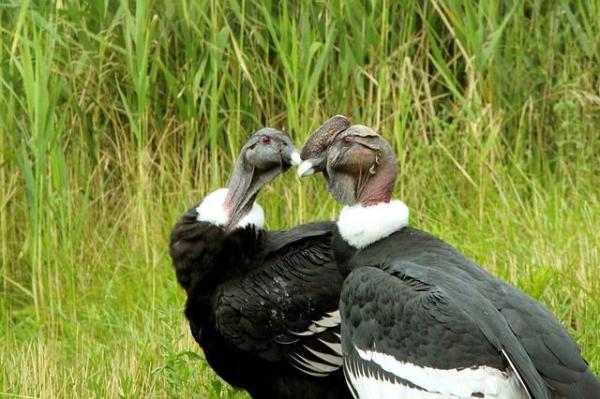
Sword-billed hummingbird (Ensifera ensifera)
Moving from one of the largest birds in Ecuador to one of the smallest, we find the sword-billed hummingbird. Also known as the swordbill, its incredibly long beak is longer than the rest of its body. Extending even further is its extremely long tongue which it uses to suck nectar from plants. The main threat to the survival of the sword-billed hummingbird is changes in its habitat and the destruction of local fauna.
Discover different flowers that attract hummingbirds in our related guide.
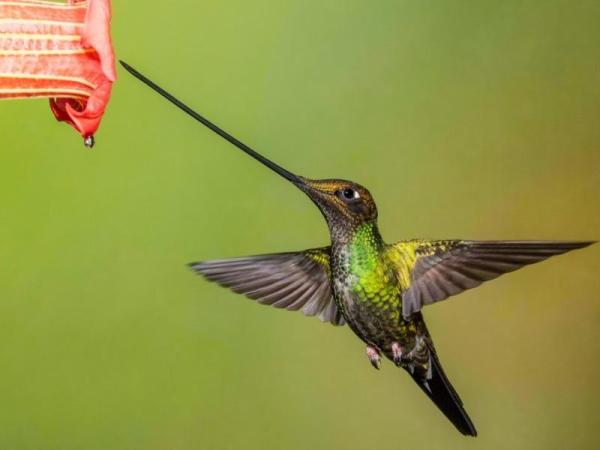
Spectacled bear (Tremarctos ornatus)
Also known as the Andean bear or South American bear, the spectacled bear is so-called thanks to the beige markings around the eyes which extend to the top of the chest (see photo). The rest of their fur is black or very dark brown. It is one of the tallest mammals in South America, reaching 6.6 ft (2 m) in terms of head and body length. It lives in different countries in South America in humid forests, especially those with abundant rainfall.
The spectacled bear is in danger of extinction due to the destruction of its habitat and hunting for its skins and meat for food. This has led to them being classified as ‘Vulnerable’.
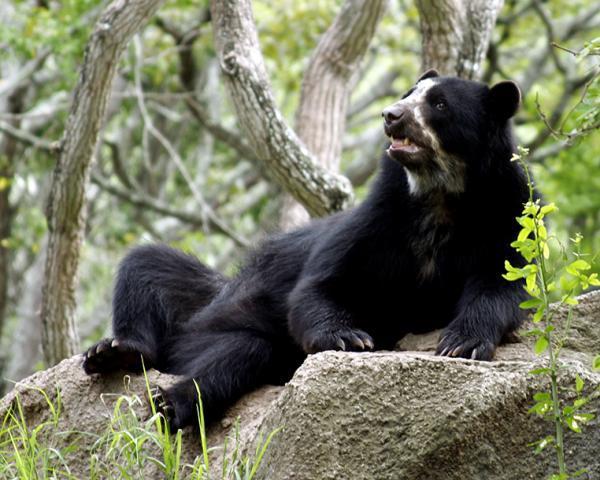
Galapagos albatross (Phoebastria irrorata)
Also known as the waved albatross, the Galapagos albatross is a seabird that reaches a wingspan of 11.4 ft (3.5 m) and weighs up to 8.8 lb (4 kg). The younger birds tend to have brown plumage, developing into a gray body with a white neck and head as they mature.
The habitat of this albatross extends across different continents, including the Galapagos Islands. The Galapagos Islands are not part of mainland Ecuador, but the animals that inhabit it are part of the wildlife of the Republic of Ecuador. They are considered ‘Critically Endangered’ due to poor fishing practices, sea pollution and tourism practices.
Discover where the albatross fits in with our list of the biggest birds in the world with photos.
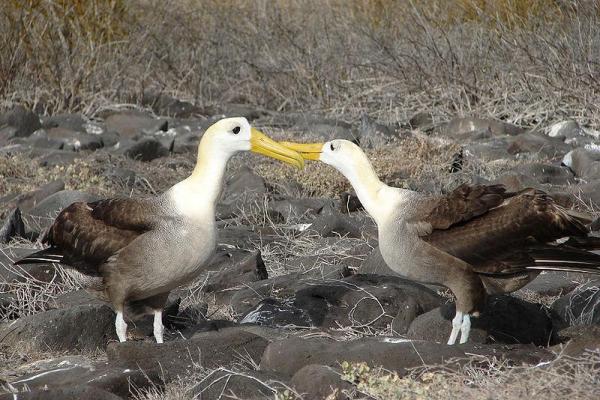
Black-breasted puffleg (Eriocnemis nigrivestis)
We continue our list of endangered wild animals in Ecuador with the black-breasted puffleg, a small bird that measures 3-3.5" (8-9 cm). As the photo depicts, the plumage of males is black with iridescent green and blue feathers. It feeds mainly on flowers and only lives in forests in South America. The bird is native to Ecuador and is in danger due to the deterioration of its habitats, especially due to logging and replacement by agricultural areas. Only around 100-150 specimens are believed to remain in the wild.
Source: worldlandtrust.org
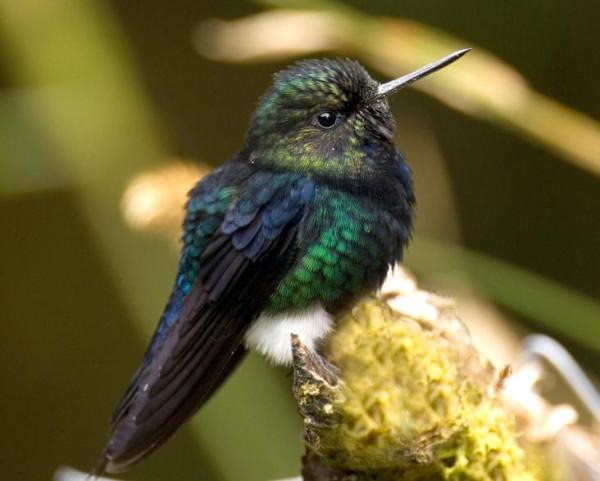
Galapagos penguin (Spheniscus mendiculus)
Here we find another species of endangered wild animal in Ecuador which is found on the Galapagos Islands. It is one of the smallest penguins, reaching just 7.9" (20 cm) in height and weighing 5 lb (2.3 kg). It has a black head and a white border from the back of the eyes to the base of the throat. It is considered ‘Endangered’, mainly due to climate change and various natural disasters which have affected wild populations.
If you want to know the potential fate of such endangered animals in Ecuador, take a look at our article explaining why the great auk went extinct.
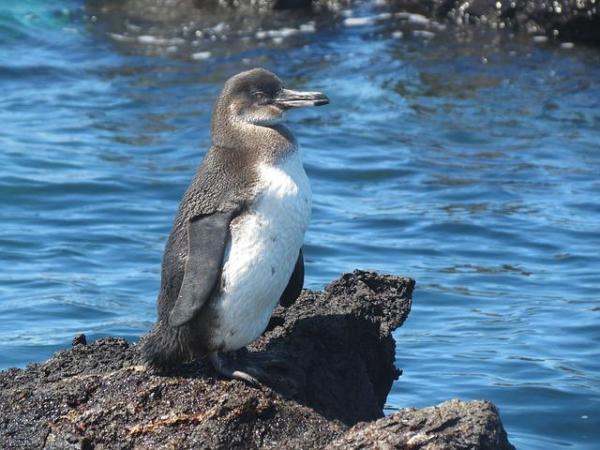
Jaguar (Panthera onca)
This mammal is an endangered wild animal in Ecuador that is native to the west of the country. It is in critical danger of extinction in this region, although it has more stable populations in other areas of South America. For this reason, it is considered ‘Near Threatened’ overall, but it is in a vulnerable state in Ecuador. Its main threats are hunting and the destruction of its habitat.
Find out whether this is one of the animals with the strongest bite in our related article.
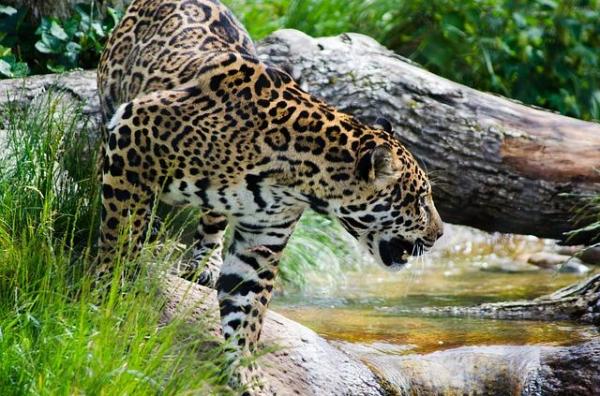
Other endangered wild animals in Ecuador
We continue with this list of animals in danger of extinction in Ecuador by sharing these species of birds, reptiles and mammals:
- Military macaw (Ara militaris)
- Galapagos marine iguana (Amblyrhynchus cristatus)
- Amazonian tapir (Tapirus terrestris)
- Ecuadorian capuchin (Cebus aequatorialis)
- Brown-headed spider monkey (Ateles fusciceps fusciceps)
- Eastern mountain coati (Nasuella meridensis)
Learn about the different types of iguanas with photos in our related guide.

How to help endangered animals in Ecuador
Measures that can be taken to help protect these endangered species include:
- Stopping the introduction of invasive exotic species that may compete with native wildlife.
- Implementing protection and conservation measures for these particularly endangered species in Ecuador.
- Not consuming products or goods that come from the illegal trafficking of these animals.
- Reporting illegal hunting and trafficking of these species.
- Getting involved in the defense and conservation of endangered species in Ecuador.
Learn more about animals which may become extinct with our article sharing types of endangered crocodile species.
Video of Ecuador's endangered animals

If you want to read similar articles to Endangered Wild Animals in Ecuador, we recommend you visit our Animals in danger of extinction category.